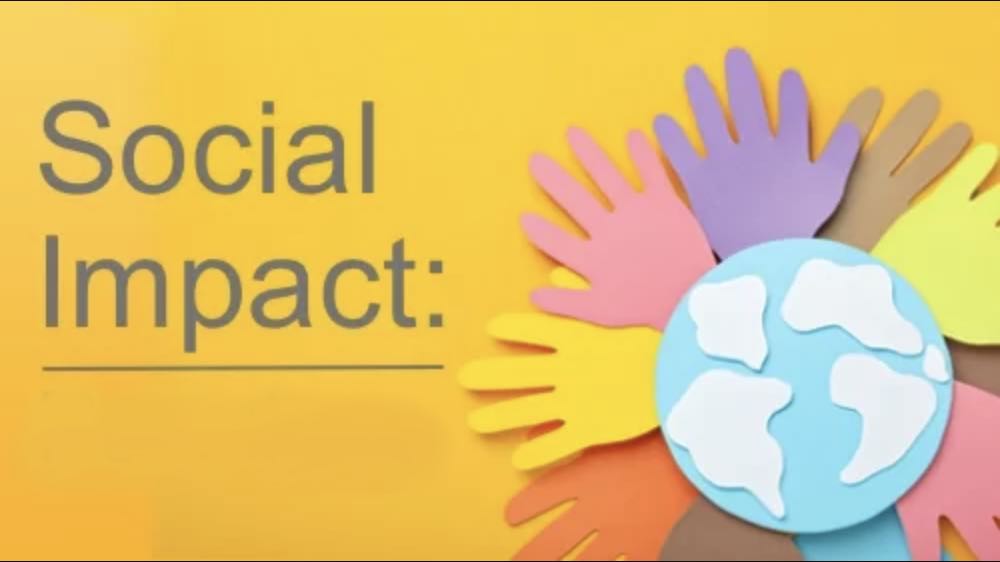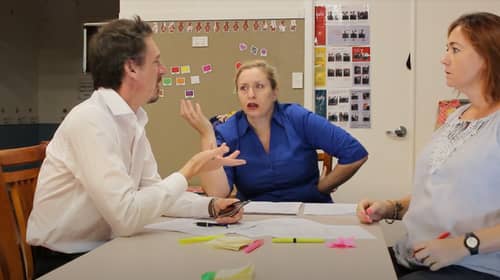How you can Create an Ethical and Effective Workplace Using Simple Strategies
Authored by:
iClick2Learn Team
‘Click the video titles below to view them’
Transcripts are available under the videos
In this section, we’ll cover some of the things that we don’t really like to deal with because of their difficulty, like challenging conversations, dealing with conflict and grievances, and dismissing staff. Although they might seem like tough situations, when you have a strategy in place, you will find them much easier to deal with. This section is about making you workplace ethical and harmonious and keeping communication open and effective.
Good leadership and clear standards of behaviour are important for your committee. Your committee members are the people who model the standards for the rest of your service. Creating a positive workplace is a reflection of your culture. The first place to start is with your stated values. Ask people in your service such as committee members, your service manager, staff and service users, what behaviours reflect your stated values? You can then consider including a reference to these values and behaviours into your code of conduct, employment and service contracts, policy documents and performance assessment processes.
Aligning values into the day to day processes should help to reinforce and model the positive workplace culture you want. Your code of conduct is a key document in setting up expectations of culture and behaviour. Having clear codes of conduct at your service sends a message that your service is committed to upholding certain ethics and standards. Your code of conduct should be part of your induction process for committees, staff and volunteers. Let’s hear from Mandy sharing some behaviours she expects of committee members.
Well there’s the general behaviours you’d expect, like arriving on time, speaking to people in a respectful way and valuing everyone’s point of view. To get the most out of the committee though, members that are more experienced could encourage or coach others to ask questions, which really helps people to grow in their own confidence and the generation of new ideas. Think about the culture at your committee meetings. Do you feel you need to review some of these behaviours with your team? We’ve provided a download sample code of ethics and conduct for your review. Reflect on your existing document or use this as a discussion point with your committee.
Greg understands the value of people with different personalities and perspectives on committees. Let’s hear his thoughts on how conflicts can build stronger committees. The people that come and sit on the committee usually are vastly different in their backgrounds. You can have a doctor, a lawyer, a plumber, or someone who works in the shire, sitting around considering the same issue. Of course they’re going to have a difference of opinion, but I think it’s really important to have the makeup of the board reflect its members, and each person given time to listen.
Not talk, but listen. Knowing the signs and causes of conflicts can help you to prevent them before they escalate and damage your service. Conflict can become a problem when people stop listening to each other, when their personalities clashes within a group, or when people want to push their own agenda rather than doing what is best for your service. Some problems arise when things are not communicated clearly resulting in misunderstandings, or when people lose their trust and respect for each other for a variety of reasons. And lack of resources can put extra stress on people causing short fuses which may escalate any underlying tension.
A difference of perception, opinions, or beliefs can cause friction or a general lack of clarity about what’s going on in your service can cause confusion leading to disagreement and disharmony. The first step in dealing with conflict is recognising it. What does conflict look like? Apart from the obvious heated discussion or argument, here are some early warning signs of conflict which can be an indicator that some action needs to be taken.
Committee members feel that meetings are boring or too long, and as a result, people are beginning to not show up at meetings, creating a conflict with others who don’t feel they’re pulling their weight. Nobody seems to know what they’re responsible for which can create issues when tasks aren’t done or people are overstepping their role. Committee meetings are fun, but decisions are rarely made because the meeting gets off topic.
This can create conflict particularly when you have others waiting on your decisions before they take action. The committee seems to be just rubber stamping the service managers decisions, and there’s no discussion or creativity. Other signs include one or two people dominating the committee. The committee and staff are in verbal conflict. The service can’t attract new people to the committee.
The committee is stuck on an issue and can’t make a decision, and people don’t enjoy being on the committee. Having policies and procedures in place, a clear sense of purpose and open communication are all important in operating your service smoothly. So how do you deal with conflict? The first step is getting people to talk about the issues. In the next lesson, we’re going to look at formal and informal conflict resolution processes, and how to have courageous conversations
Once you’ve identified that there is conflict, your first step should be talking about it with the people involved. Start informally, but always offer the option of a formal process as well. Your approach should be nonjudgmental, objective, supportive, and confidential. To keep track of any issues, you should write them down. The other people involved really should have a good understanding of what concerns are being raised. If it’s an informal discussion, you could communicate this to them verbally before the meeting. In a formal meeting, you should provide them with an agenda and keep records of the discussion and actions.
Talking about the problem can be difficult for some people, and they may benefit from having someone they trust to sit in on the conversation to support them. One of our staff members has asked to speak with our grievance officer Joan to discuss a situation they’re concerned about. Let’s hear what’s going to happen. I understand you have some concerns you haven’t been able to resolve with the service manager. Yes, how will this work? This is an informal discussion. I’m here to listen, so please speak freely, and don’t worry, it’s all confidential. Of course, if you’d like to formalise this process, you can put it in writing.
This meeting’s so I can understand the situation and explore ways to resolve it. Okay. I’m going to ask some questions to clarify my understanding as well. I will of course talk with the other staff involved later. For now, if you could tell me what happened from your perspective. Okay, so it was late Friday night. People find these conversations very confronting and difficult for several reasons. We’ve provided a download which outlines a strategy on how to have courageous conversations using the GROW model which involves four steps: one, setting a goal, two, looking at the current reality, three, looking at the options available to resolve the problem, and four, finding a way forward.
Let’s hear from Kim on how she uses the GROW model to help resolve conflicts. I previously worked with a board who was really struggling with financial sustainability. The commercial solution the board had come up with created big conflicts with the members and their rights. So using the GROW model, the board came up with a number of different options and are currently trialling one of these. The results are the members are happier and the board is in a better financial position into the future. If an informal approach doesn’t resolve the situation or the person chooses to follow a formal process, your grievance officer or delegated person should work with them. They should be given a copy of your service’s conflict and your grievance resolution policy.
Also, the procedure and steps of the process should be explained. Your grievance officer should try to understand the situation and identify the most important issues. The steps in your service’s grievance and conflict policy should then be followed with guidance from your grievance officer. We’ve provided a downloadable checklist for handling conflict. Have a look through your service’s grievance and conflict policy and familiarise yourself with what needs to happen so you’re prepared for a solution.
Dismissing staff is a serious matter, and there are laws that govern this process to make sure that it’s done in a lawful way. Your committee delegates this function to your service manager and is not to be involved unless required. If it is your service manager being dismissed, then this is the role of your committee. If you haven’t done this before, or it’s been a while, it’s a good idea to do your research, and always follow your service’s policies and procedures.
You should also reference employment documents, such as contracts, awards, and any enterprise bargaining agreements. These documents include information on grievance management and termination processes you should consider. Make sure your reason for dismissal is one that can’t be deemed harsh, unjust, or unreasonable. If poor performance is the concern, give appropriate notice and written warnings identifying the problem and how performance could be improved. You should always give warnings and undertake consultation with staff before dismissing them.
The person in question may not be aware of the concerns and should be advised that corrective action is required. You should always document these warnings and any meetings as evidence of what’s occurred, and what you’ve done in an attempt to resolve these concerns. The more evidence you have that all required steps in the dismissal process have been followed the better. You must carefully consider reasons for dismissal, particularly, if it’s for concerns that are not able to be supported or justified. Where other reasons apply, you must have evidence, such as a witness. If dismissal is the only way, make sure you communicate both verbally and in writing with the staff member, giving clear reasons for the termination and outlining any termination package.
It’s a good idea to take time to review your service’s policy on dismissal and do some research on the fairwork.gov.au website, fairwork.gov.au website so you know where you can seek information if you need to dismiss a staff member in the future. We’ve provided a link to this website below.
Related posts
Starting a Not-for-Profit
Accidental Counsellor
Developing a Fundraising Plan
Create a Sponsorship Plan
How to Develop a Logic Model [Course]
Social Impact
Develop Your Event Plan
Approving Your Budget
5 Tips for effective meetings
Board Assessments and Evaluations: An Introduction
Legal Structures
Organisational Structure
How to Run Your AGM
Governance and Your Organisation
3 Essential Financial Documents
Staying On Top of Your Financials
Informed Decision Making in Your Not-For-Profit
What is a Code of Conduct and Why Do You Need One?
Getting to Know Your Constitution
Governance Risks for Service-Based Organisations
- Tags | Boards and Committees, Conflict, Workplace




















